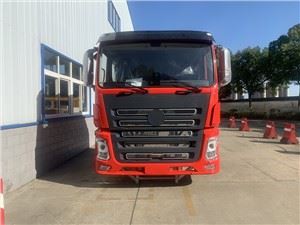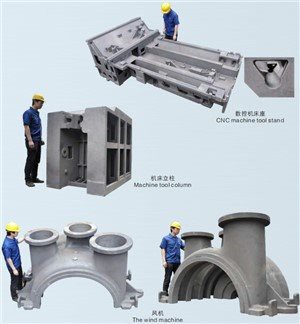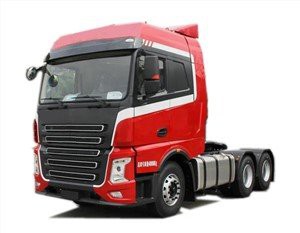Understanding the Height of Cranes: A Comprehensive Guide
In the construction and engineering industries, cranes are essential tools used for lifting heavy materials and facilitating the movement of loads. Understanding the height of a crane is crucial for ensuring safety, stability, and efficiency on job sites. In this article, we will delve into various types of cranes, their configurations, and the factors that influence their height, along with practical examples and tips.
What is a Crane?
A crane is a machine that employs a system of pulleys and cables to lift and move heavy objects. Cranes are widely used in construction, manufacturing, and transportation, providing the ability to safely and effectively handle materials that would otherwise be too difficult to move manually.
Types of Cranes
Cranes come in various shapes and sizes, each designed for specific applications. Understanding these types is essential to comprehend their heights and functionalities.
1. Mobile Cranes
Mobile cranes are versatile and can be easily transported from one site to another. They typically have a telescopic boom that can extend to various heights, making them effective for different types of jobs.
2. Tower Cranes
Tower cranes are fixed to the ground and are commonly used in large construction projects such as skyscrapers. Their height can be adjusted by adding more sections, allowing for significant lifting capabilities.
3. Overhead or Bridge Cranes
These cranes are used in industrial settings, typically found in warehouses and manufacturing plants. They travel along a set of tracks and can lift heavy materials from one side to the other.
4. Crawler Cranes
Crawler cranes are equipped with tracks that allow them to move over uneven terrain. They are often used in large construction projects where stability and a larger lifting capacity are required.
The Importance of Crane Height
The height of a crane plays a critical role in determining its capabilities and the safety of operations. Different projects require varying crane heights based on factors such as load weight, site conditions, and lifting distance.
Key Factors Influencing Crane Height
Several factors influence the height of a crane, including:

1. Type of Crane
As discussed, different types of cranes have varying height capabilities. Tower cranes, for example, can reach heights of over 100 meters, while mobile cranes typically have a shorter reach.
2. Boom Length
The boom is the arm of the crane that extends to lift loads. The length of the boom directly affects the height the crane can reach and how far it can extend horizontally.

3. Load Capacity
Crane height must also consider the load capacity. A taller crane with a longer boom may offer greater height, but it must also maintain stability while lifting heavy loads.
4. Site Conditions
Surrounding environment, including nearby structures, ground stability, and accessibility, plays a crucial role in determining the crane’s height setup.
Common Crane Heights
Understanding average heights for various cranes can help you plan for your construction or lifting project. The following table outlines typical heights associated with various crane types:
| Crane Type | Average Height (meters) | Maximum Load Capacity (tons) |
|---|---|---|
| Mobile Crane | 30-60 | 30-200 |
| Tower Crane | 30-100+ | 10-100 |
| Bridge Crane | 10-20 | 2-25 |
| Crawler Crane | 20-50 | 30-150 |
Practical Examples of Crane Height Utilization
Understanding how crane height is utilized in real-world applications can provide insight into its importance in construction. Here are a few examples:
1. Urban Construction Projects
In urban areas, tower cranes are often employed due to their ability to lift materials to significant heights. For instance, constructing a high-rise building may require using a tower crane that can reach over 100 meters to facilitate the installation of steel beams and concrete panels.
2. Industrial Warehouses
In warehouses, overhead cranes are commonly used for moving heavy goods. The height of the crane must be adequately designed to accommodate the vertical storage of materials, allowing efficient use of space.
3. Bridge Construction
During bridge construction, cranes may lift large pre-cast sections into place. The height of the crane plays an essential role, particularly when constructing bridges over highways or waterways.
Tips for Choosing the Right Crane Height
1. Assess Project Requirements
Before selecting a crane, evaluate the specific lifting requirements of your project, including load types and heights.
2. Consult with Professionals
Always consult with engineers or crane operators to ensure the chosen crane will meet the needs of your project while adhering to all safety regulations.
3. Evaluate Site Conditions
Assess the construction site for any physical constraints (e.g., neighboring buildings or insufficient ground stability) that may affect crane height.
4. Safety Precautions
Ensure safety measures are in place to protect workers during crane operations. This includes the use of outriggers, proper operator training, and establishing exclusion zones around the crane.
Frequently Asked Questions

1. What is the tallest crane in the world?
The tallest crane in the world is likely the “Strata Tower Crane” in Dubai, which can reach heights over 250 meters. Tower cranes at large construction sites can be combined to reach even greater heights.
2. How do you determine the lifting height of a crane?
The lifting height of a crane is determined by measuring the total height of the crane’s boom when fully extended, considering the angle of elevation and any oversailing restrictions of the surrounding area.
3. Can crane heights be customized?
Yes, crane heights can often be customized. For example, tower cranes can be extended by adding additional sections, while mobile cranes can use adjustable booms for various heights.
4. Is a taller crane always better?
Not necessarily. While a taller crane can reach greater heights, it must also consider the load capacity and stability. The right crane height depends on the specific project requirements and site conditions.
5. What kind of maintenance is needed for crane height components?
Regular inspections should be conducted on crane height components, including the boom, cables, and hydraulic systems, to ensure safe operation and prolonged lifespan.
6. How does wind affect crane height operations?
Wind can significantly affect crane operations at height. Most cranes have limitations on wind speeds for safe operation, and weather conditions must be assessed before lifting activities.
